Install the Elasticsearch server
Elasticsearch is a real-time distributed search and analytics engine that allows you to explore your data very quickly. It is used for full-text search, structured search, analytics, and all three in combination.
And it packages up all this functionality into a standalone server that your application can talk to via a simple RESTful API, using a web client from your favorite programming language, or even from the command line.
The Enhanced Autocomplete extension will allow you to make the link between the search and analytics engine and Magento 2.
You can find more information on the product here:
Install and run Elasticsearch server
As Elastic advises, "the easiest way to understand what Elasticsearch can do for you is to play with it".
To be able to use the Enhanced Autocomplete extension and reach the server, you first need to have a recent version of Java. You can easily install the latest version of Java from www.java.com.
Then you can install and run the Elasticsearch engine following the below steps.
Install Elasticsearch
You can download the latest version of Elasticsearch from elastic.co/downloads/elasticsearch.
Run Elasticsearch
To run Elasticsearch, open a console, and run the following command:
cd elasticsearch-<version>
./bin/elasticsearchIf you’re running Elasticsearch on Windows, simply run:
bin\elasticsearch.batTest Elasticsearch
You can easily test if the Elasticsearch engine is reached by trying to access http://localhost:9200/?pretty or by opening a new terminal window and running the following:
curl 'http://localhost:9200/?pretty'You should then get:
You now have an Elasticsearch node up and running.
Use the Enhanced Autocomplete extension
You can enable the Enhanced Autocomplete extension in:
StoreSWyomind Enhanced Autocomplete
Once the extension is enabled, you will be able to configure the display settings as you want.
Debug mode
You have the possibility to enable debug mode.
When it is enabled, a toolbox will be displayed on the frontend with the below information:
- Infinite scroll?: have the products been loaded via the infinite scroll?
- Cache?: the module offers a cache for the current page. If the request is cached, the server will not be called and the response will be faster
Yes = the result comes from the cache.
No = the result doesn't come from the cache.
The cache is reset when the page is reloaded. - Elasticsearch?: it is the contrary of "cache?". Are the results coming from the Elasticsearch server or not?
Yes = the request has been sent to the ELS server and the results are coming from ELS.
No = the results were cached. - PHP time: it is the execution time of the PHP code (including requests to the ELS server).
- Request time: it is the total execution time of the Ajax request to retrieve the products (including "PHP Time").
- Rendering Time: it is the time needed to render the products on the page ("Request Time" not included).
- Total time: it is the time required for the Ajax request and the rendering of the products.
- Enable Template Hints: to display the templates used for rendering the page by the module.
- Show last request data: to show the results of the last query (ESL or cached). It contains an explanation of why and how some products score higher than others.
Configure the autocomplete box
The Enhanced Autocomplete extension offers many features to configure the display as you want.
Enable the highlight
With Enhanced Autocomplete, you have the possibility to enable the search terms highlight so that search terms can be underlined in the search results data.
Enable the "All results" link
You can enable the "All Results" link in the autocomplete box. This will redirect to the search results page.
Update Search Terms
You have the possibility to update "Search Term" information when a search is performed from the autocomplete form.
You will then find the updated search terms in:MarketingSEO & Search Search Terms
Define your labels
With the Enhanced Autocomplete extension, you can define your own labels for:
- "All Results" link
{{term}} can be used to be replaced by the search term in the label.
See all results for <b>{{term}}</b> >> - "Did you mean?" section
Do you mean? - "Products" section
Products - "No product found"
No product found - "Categories" section
Categories - "No category found"
No category found - "Pages" section
Page - "No page found"
No page found
Enable the Did you mean feature
The extension comes with the Did you mean feature. This provides alternative suggestions when users may have misspelled a search term.
The Did you mean feature can be enabled in:
- the autocomplete box
- the search results page
Also, you can limit the number of suggestions displayed in the autocomplete box.
Configure the results displayed in the autocomplete box
The Enhanced Autocomplete extension allows you to make the products, the categories, and also the CMS pages searchable in the autocomplete box.
You can define your preferences from:
StoreS Wyomind Enhanced Autocomplete Product/Category/CMS
Product
Below, only products are enabled in the autocomplete box.
You can also enable redirection when only one product is found.
Then, if only one product is found during the search, the customer will be automatically redirected to the product page when pressing the Enter button.
Category
Categories can be displayed in:
- the autocomplete box
- the search results page: displayed in the left column
For each one, you can limit the number of results displayed.
Also, you have the choice to display or hide that section when there is no category found.
Below, products and categories are enabled in the autocomplete box.
CMS page
Your CMS pages can be enabled in:
- the autocomplete box
- the search results page: displayed in the left column
For each one, you can limit the number of results displayed.
Also, you have the choice to display or hide that section when there is no CMS page found.
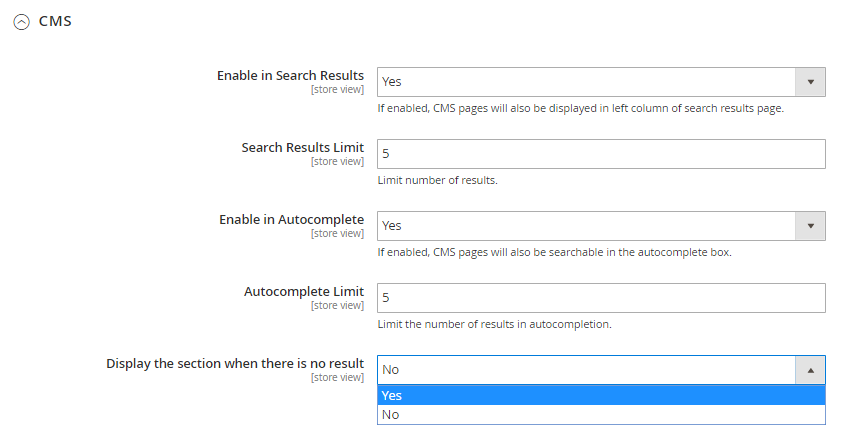 Below, products, categories, and CMS pages are enabled in the autocomplete box.
Below, products, categories, and CMS pages are enabled in the autocomplete box.
Make any search on your website much more relevant, quicker, and user-friendly than the default Magento 2 search tools with the Elasticsearch Suite which includes the Multifaceted Autocomplete and the Advanced Layered Navigation extensions.
Configure the Elasticsearch Core
You can configure the Elasticsearch Core according to your needs in the Magento configuration from:
StoreSWyomindElasticsearch Core
Enable the logs / debug
The extension comes with logs in order to help you to check the frontend requests, the indexation, and the Elasticsearch server status.
Enable request log
A log file is created for the frontend requests:
var/log/Wyomind_ElasticsearchCore_Frontend_Requests.log
Enable indexation log
A log file is created for the reindexation process:
var/log/Wyomind_ElasticsearchCore_Indexation.log
Enable client log
A log file is created for the Elasticsearch client calls:
var/log/Wyomind_ElasticsearchCore_Client.log
Enable Elasticsearch Server status log
A log file is created for the Elasticsearch Server status:
var/log/Wyomind_ElasticsearchCore_Server_Status.log
Receive a backend notification when the server fails
When the Elasticsearch Server status log is enabled, you can enable and define your own configuration for the backend notification subject and content.
Note that you have the possibility to use variables in the email content:
- {{store_id}}
Store ID - {{code}}
Store code - {{name}}
Store name - {{server_version}}
Elasticsearch Server version - {{servers}}
Servers
Receive a mail notification when the server fails
When the Elasticsearch Server status log is enabled, you can enable and define your own configuration for the email notification.
Note that you have the possibility to use variables in the email content:
- {{store_id}}
Store ID - {{message}}
Returned message - {{server_status}}
Elasticsearch Server status - {{server_version}}
Elasticsearch Server version
Configure the server settings
You can configure the general Elasticsearch settings.
Elasticsearch Server version
Here will be displayed the version of the Elasticsearch server that you have installed.
6.3.2
Servers
The servers must be written as host:port and separated with a comma.
Follow this pattern for full available parameters.
Check that your servers are correctly configured by clicking on TEST servers.
Verify Host
This is only used for https connection. You can set that option to No if you don't have a valid SSL certificate.
Connect Timeout
Configure the indexing settings
Index Prefix
Index Settings
Having more shards enhances the indexing performance and allows to distribute a big index across machines and having more replicas enhances the search performance and improves the cluster availability.
More info here: Index settings properties reference
Analysis Settings
This is where you can define the analysis settings.
Safe Reindex
Reindex in a temporary index and switch to it once finished. Especially useful for large product catalogs.
Automatically run indexers if invalidated
In some cases, you might need to reindex indexes automatically as it can take a lot of time. Then you can choose to automatically run indexers via a cron task when they are invalidated.
A notification is displayed in the header of Magento when indexes are invalidated.
If you disable this option, see how to run your indexes manually.
Configure the search settings
Query Operator
By default, it is set to AND. You may have fewer results with the AND operator but they’ll be more relevant.
"digital camera" is translated to "digital AND camera" or "digital OR camera"
Enable Product Weight
This enables product weight modifier. It is only available for search results.
Use parent images
By enabling this option, when a product (configurable or bundle) is found from the data of a child product, then the parent product images will be used instead of the child product images.
Return available products first?
Configure the entities settings
You can configure the indexing of the attributes more finely.
- Open each group of attributes using the arrow.
- Find all the attributes grouped by type.
- When fields are grayed out, it means that the attribute is indexed by default by the module.
To be able to modify the searchable option, the attribute must be indexable. - For an attribute to be searchable it must be indexed.
To be able to modify all of the following options, the attribute must be searchable. - You can boost each attribute you are indexing by assigning them a weight from 1 to 10.
Note that 10 is the highest weight. - You can start matching results from the first 1 to 5 characters.
- You can start matching results from the last 1 to 5 characters.
- The analyzer defines the way in which the content of the attributes will be analyzed. You have the choice between several analyzers.
Note that the automatic mode is suitable in most cases.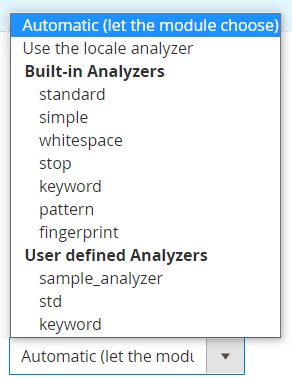 See how to create your own analyzers with our module.
See how to create your own analyzers with our module. - You have the possibility to enable the approximative search for each attribute and choose the fuzzyness level:
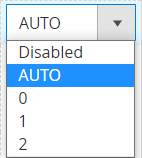
0: the number of possible errors is 0 whatever the size of the search word
1: the number of possible errors is 1 whatever the size of the search word
2: the number of possible errors is 2 whatever the size of the search word
AUTO: generates an edit distance based on the length of the term. Should generally be the preferred value.For the AUTO mode, the length of the words has an impact on the edit distance:
0..2: must match exactly
3..5: one edit allowed
>5: two edits allowedCheck the Elasticsearch documentation for more info on the fuzzy query mode.
Category
You can enable Category Search so that they can be indexed in Elasticsearch.
If you do, you need to select and configure the category attributes that are searchable.
Description
Name
Page Title
URL Key
CMS
You can enable the search among your CMS pages to be indexed in Elasticsearch.
You just need to select and configure the searchable attributes.
Content, Content Heading, Identifier, Title
You also have the possibility to exclude some pages that may not be relevant from the search results.
404 Not Found, Enable Cookies, Privacy Policy
Product
When the Product Search is enabled, the products are indexed in Elasticsearch.
You can define the image size in pixels.
50px
Then, select and configure the attributes that are searchable.
Product Name
SKU
Color
Description
Gender
Manufacturer
Configure the frontend design
You have the possibility to define your preferences for the colors and the display.
Loader Image
Choose the image you want to display when categories and search pages are loading. It can be:
Primary color
Secondary color
Background primary color
Background secondary color
Enable overlay
Dark overlay behind the autocomplete popup.
Enable blur effect
Blurred background behind the autocomplete popup.
Enable transition
Smoothly show/hide the autocomplete popup.
If enabled, you can define the duration of the transition in seconds.
0.2
Developer tools
Test Search
The Test Search is equivalent to the frontend search with debug info. This allows you to control how the search will work with the Elasticsearch Core configuration.
You can access the Test Search page from:
SystemWyomind Elasticsearch coreTest Search
You can configure:
- Search term
Add the term you want to search. - Results limit
Define a limit for the number of results displayed. - Storeview
Choose the store view from where you want to run the search. - Customer Group
Choose the customer group to search from.
Useful to control the product prices for a specific customer group.
After that, you can click on Search.
A grid will display the results for your search.
When clicking on Show details, you should get more details about the results.
This is particularly useful to know everything that is returned in the search.
The explanation field explains how the score is calculated and why the product appears first in the search results.
Test Analyzers
As our module offers the possibility to create your own analyzers, it is important to be able to test them.
You can access the Test Analyzers page from:
SystemWyomind Elasticsearch coreTest Analyzers
Add your code in the Custom Analyzers field, select the Built-in Analyzers you want to test, and add a Test phrase.
Click on Run Tests.
The result of the analyzer will be displayed in the table below.
Below are some examples:
whitespace: will analyze by separating words with spaces
standard: will separate words with spaces, apostrophes, chevrons ... and remove HTML tags to keep only useful content
Manage the indexes
You have the possibility to get more information and to manage your indexes directly from the table in:
SystemWyomind ELasticsearch CoreManage Indexes
The indexes are automatically updated after the below actions:
- Add / Edit / Delete a product
The product is updated at the product index level. - Add / Edit / Delete a CMS page
The CMS page is updated at the CMS index level. - Add / Edit / Delete a category
The category is updated at the category index level. - Category products list update
The category is updated at the category index level and the products previously and currently linked to the category are updated. - Review added to a product
The product rating is updated at the product index level.
Indexer
There are 3 types of index:
- category
- cms
- products
Description
In the Description column, when clicking on More information, you can see:
- demo_m2_default_category
It is the name of the index at the Elasticsearch server level under the below format:
the prefix + the storeview code + the index type - 36 documents
It means that 36 categories are indexed. - 14,77 kB
It is the size of the index on the disk. - View Mapping
When clicking on View Mapping, a popup should open and display the mapping data.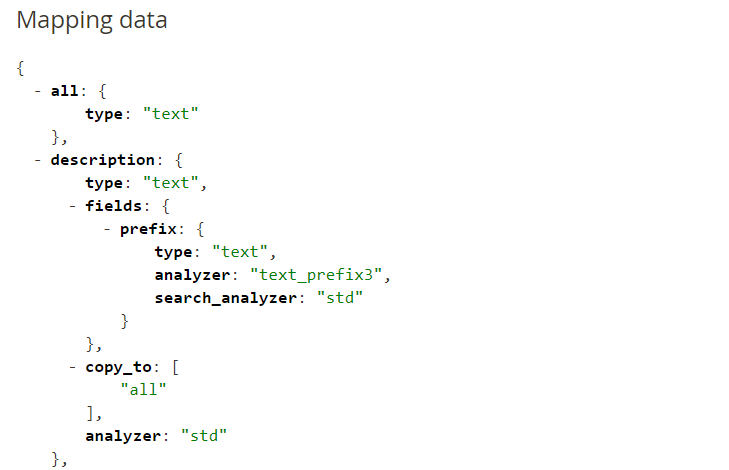
Last Update
The last time the index has been run will be recorded in the Last Update column.
Last action state
The last action state will be recorded in this column. You can also see the number of entities that were indexed by hovering the mouse over the status.
When running an index, a progress bar will display its status and some information about the indexing process.
Status
From the Status column, you can see if the indexes are valid of invalidated.
Action
Browse Data
You can easily see what is indexed at the category, CMS pages, and product level in that section:
SystemWyomind ELasticsearch CoreBrowse Data
From the Action column, you have the possibility to:
- Edit each line
Redirects you to the category/CMS/product page - See the raw data
Opens a popup that displays the raw data; what is really indexed in Elasticsearch.
Use the Command Line Interface
The extension comes with several command lines you can easily use.
Update Elasticsearch server version
To update the Elasticsearch server version with the right, you can use the below command line:
bin/magento wyomind:elasticsearchcore:update:server:versionUpdate the configuration file
To update the configuration file which is used on the frontend to avoid loading the full Magento Core, you can use the below command line:
bin/magento wyomind:elasticsearchcore:update:configReindex your data
To reindex your data, you can use the below command line:
bin/magento wyomind:elasticsearchcore:indexer:reindex [options]Options:
- -s storecode or --store storecode
The code of the store view for which to re-index data.
Note that this parameter is unique, you can’t add many store codes.To reindex all types for the store view which code is “storefr”:
bin/magento wyomind:elasticsearchcore:indexer:reindex -s storefror
bin/magento wyomind:elasticsearchcore:indexer:reindex --store storefr - -i type or --index type
A space-separated list of index types: cms, category, and product
To reindex products only:
bin/magento wyomind:elasticsearchcore:indexer:reindex -i productor
bin/magento wyomind:elasticsearchcore:indexer:reindex --index productYou can also reindex your brands when using the Shop by Brand extension. - -p ID or --product ID
The ID of the product to reindex.
Note that this parameter is unique, you can’t add many products.To reindex product with ID 2:
bin/magento wyomind:elasticsearchcore:indexer:reindex -i product -p 2or
bin/magento wyomind:elasticsearchcore:indexer:reindex --index product --product 2
More examples:
To reindex all index types for all store views and products:
bin/magento wyomind:elasticsearchcore:indexer:reindex
To reindex categories for the store view which code is “storefr”:
bin/magento wyomind:elasticsearchcore:indexer:reindex -s storefr -i category
To reindex categories and CMS pages:
bin/magento wyomind:elasticsearchcore:indexer:reindex -i category cms
When running an index, a progress bar will display its status and some information about the indexing process.
Manage your search results
Like the product attributes, you can assign weight to your products directly.
Give weight to your products
Assign weight to products
To boost your products in the search results, you can give them a weight. For this, go in:
CatalogProducts
There, edit a product you want to showcase.
In the Wyomind Elasticsearch Core tab, you can define the weight from 1 to 10.
Ignore products in the indexation
You have the possibility to ignore products in the indexation process. For this, go in:
CatalogProducts
There, edit a product you want to showcase.
In the Wyomind Elasticsearch Core tab, you can switch the Ignore the product for indexation option to Yes.
Manage the synonyms in your search results
The extension takes into account the synonyms in the search.
Create groups of synonyms
You can create new groups of synonyms from:
MarketingSeo & SearchSearch Synonyms
For example, if you create the list of synonyms:
shoes,footwear
This means that when searching for "orange shoes", the extension will search:
orange shoes
orange footwear
If other synonyms are defined such as:
red,orange,yellow
In that case, the extension will search:
red shoes
red footwear
orange shoes
orange footwear
yellow shoes
yellow footwear
All the corresponding products will then be displayed in the same list.


 Magento 2
Magento 2


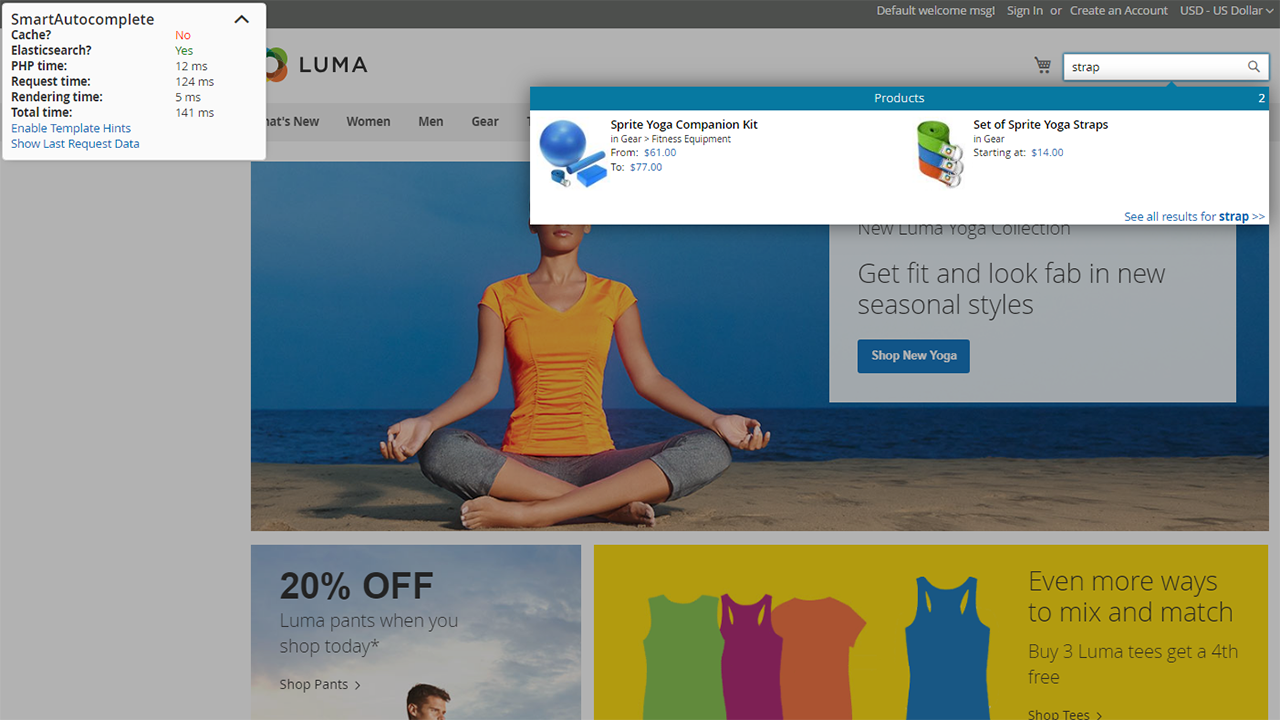


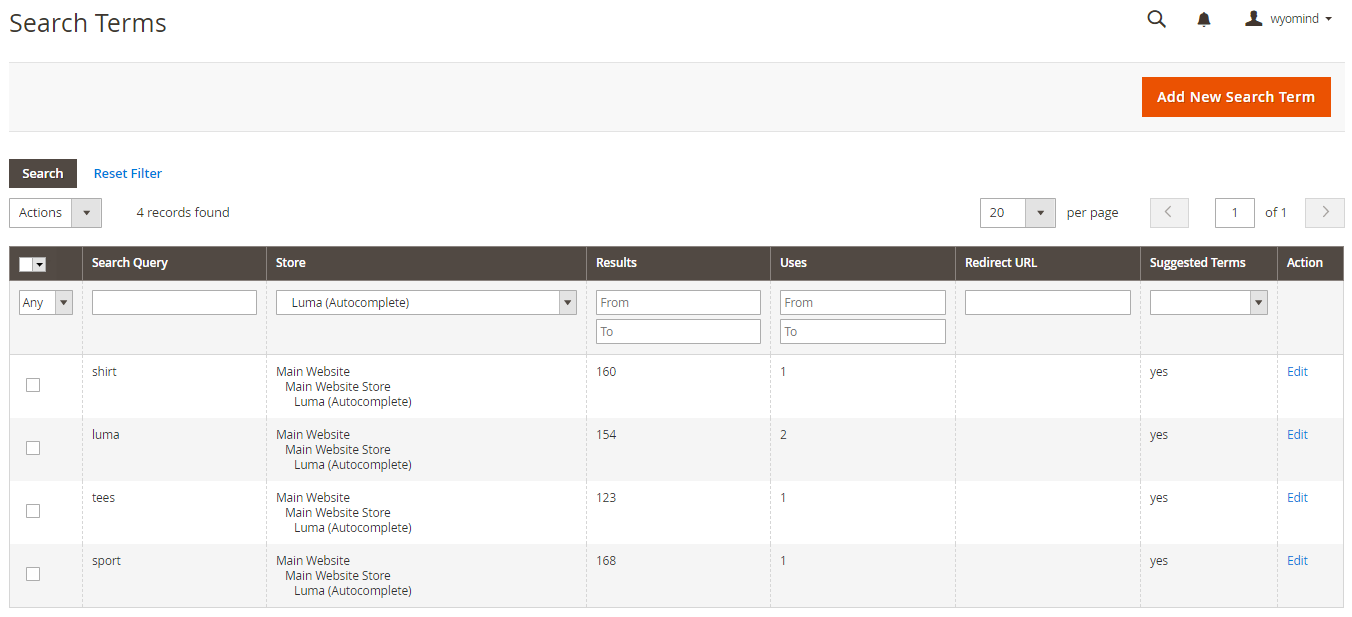
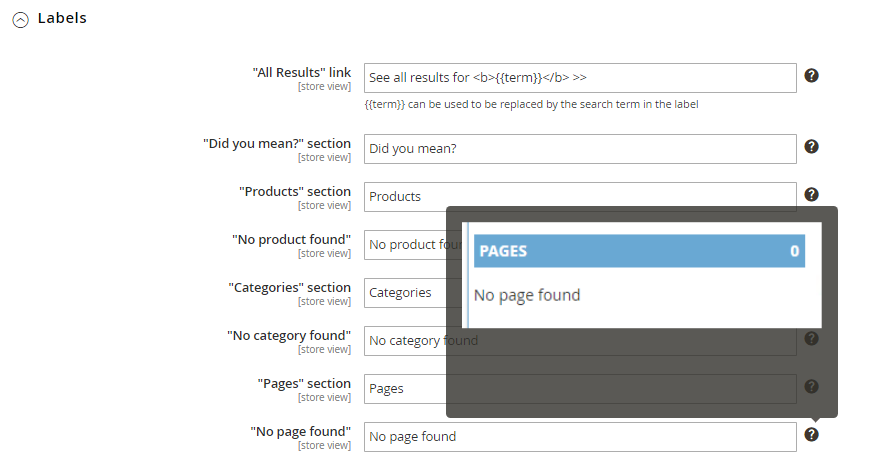



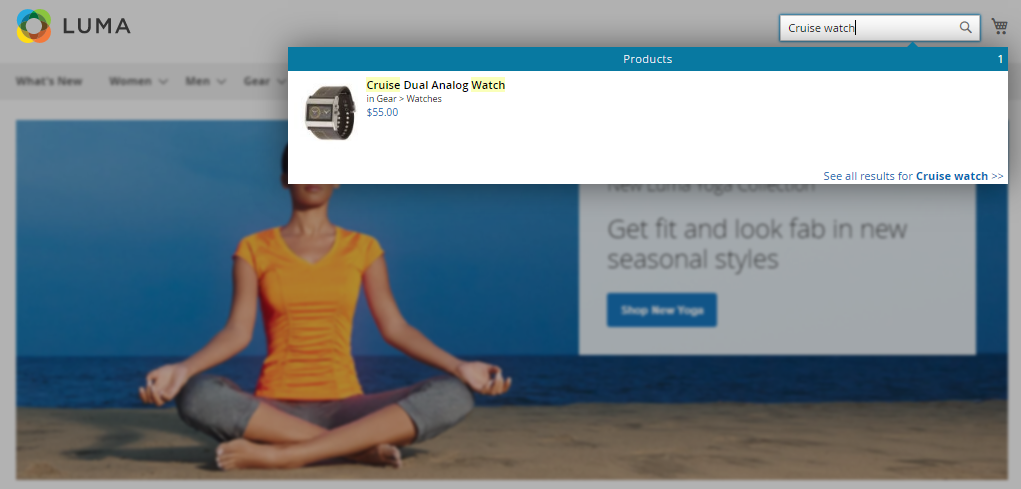



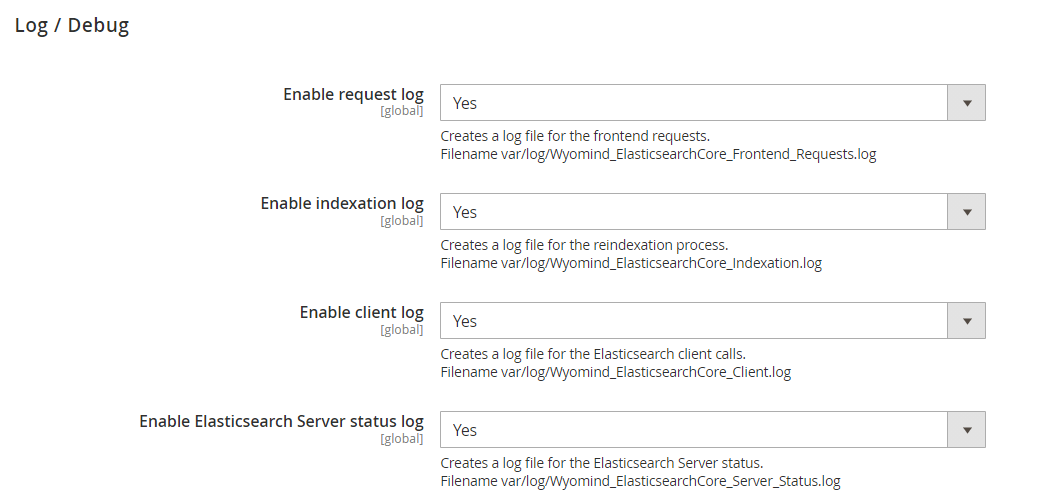
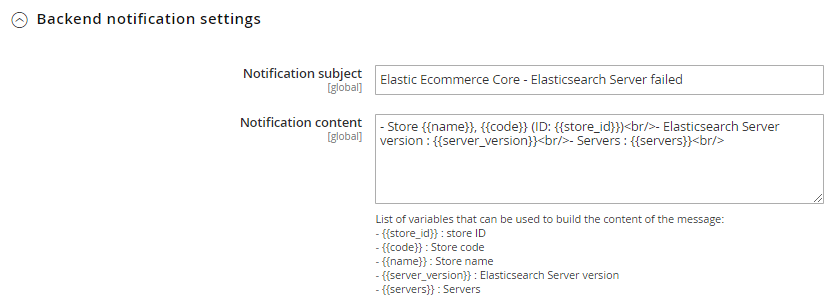
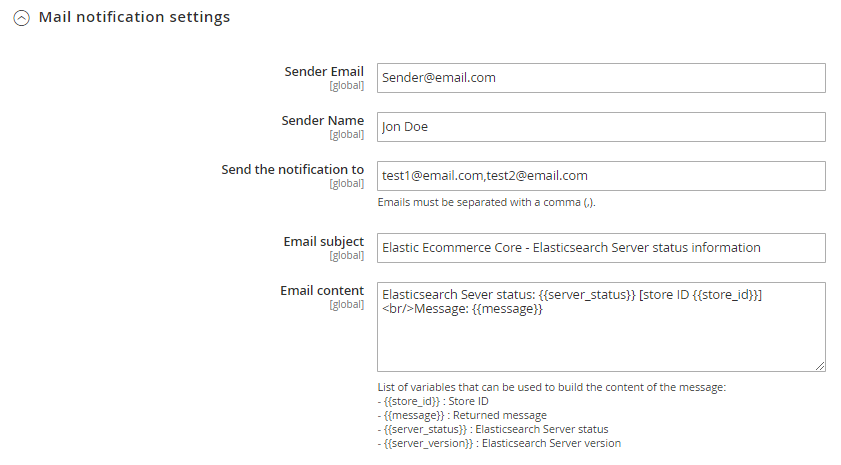













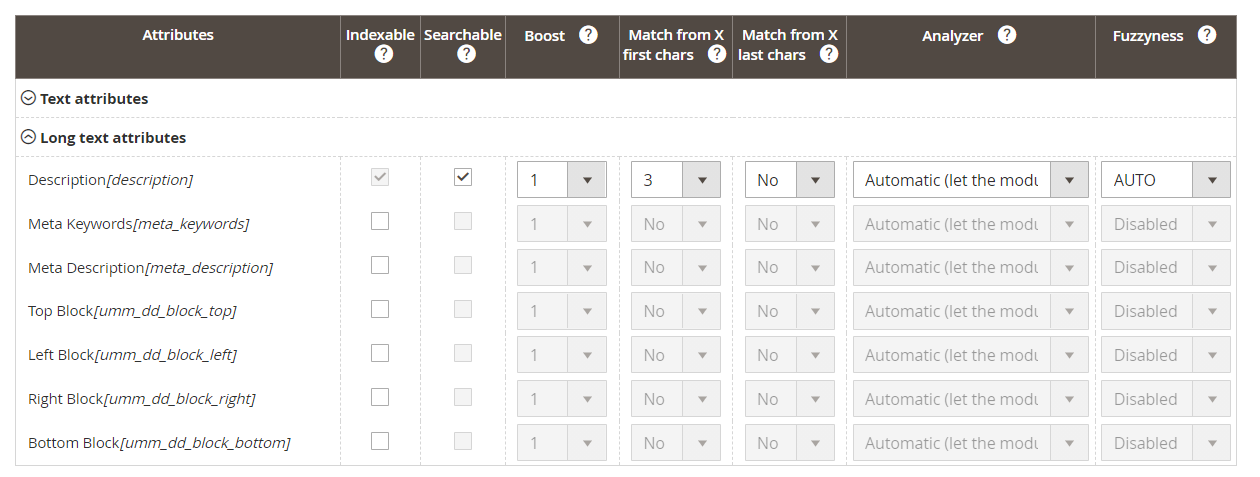






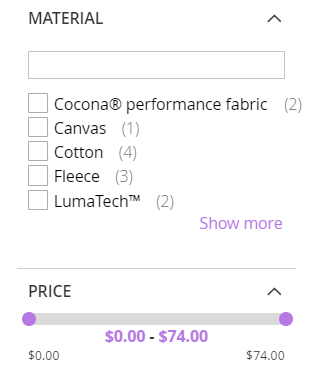





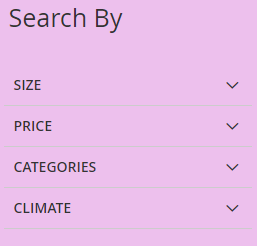



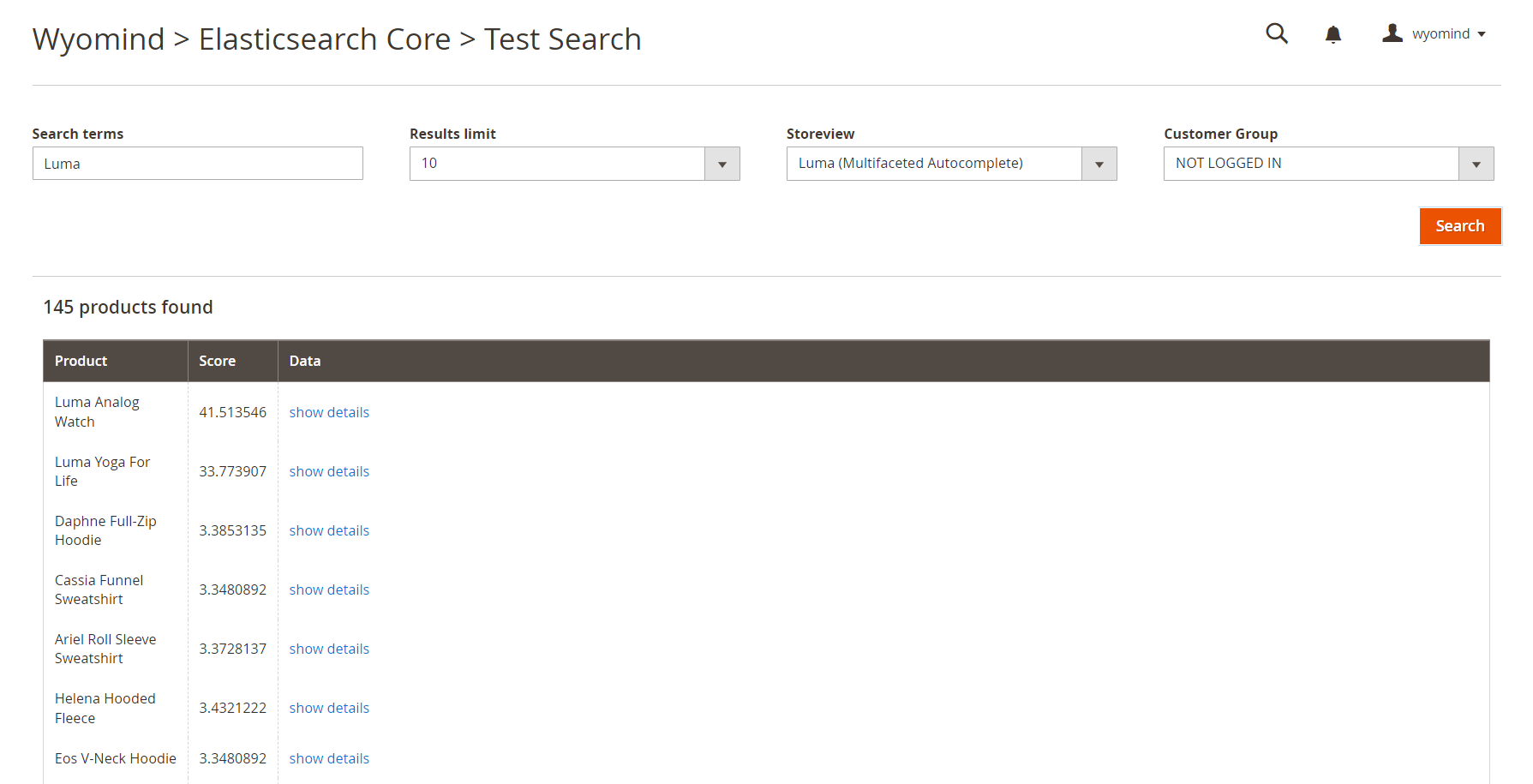
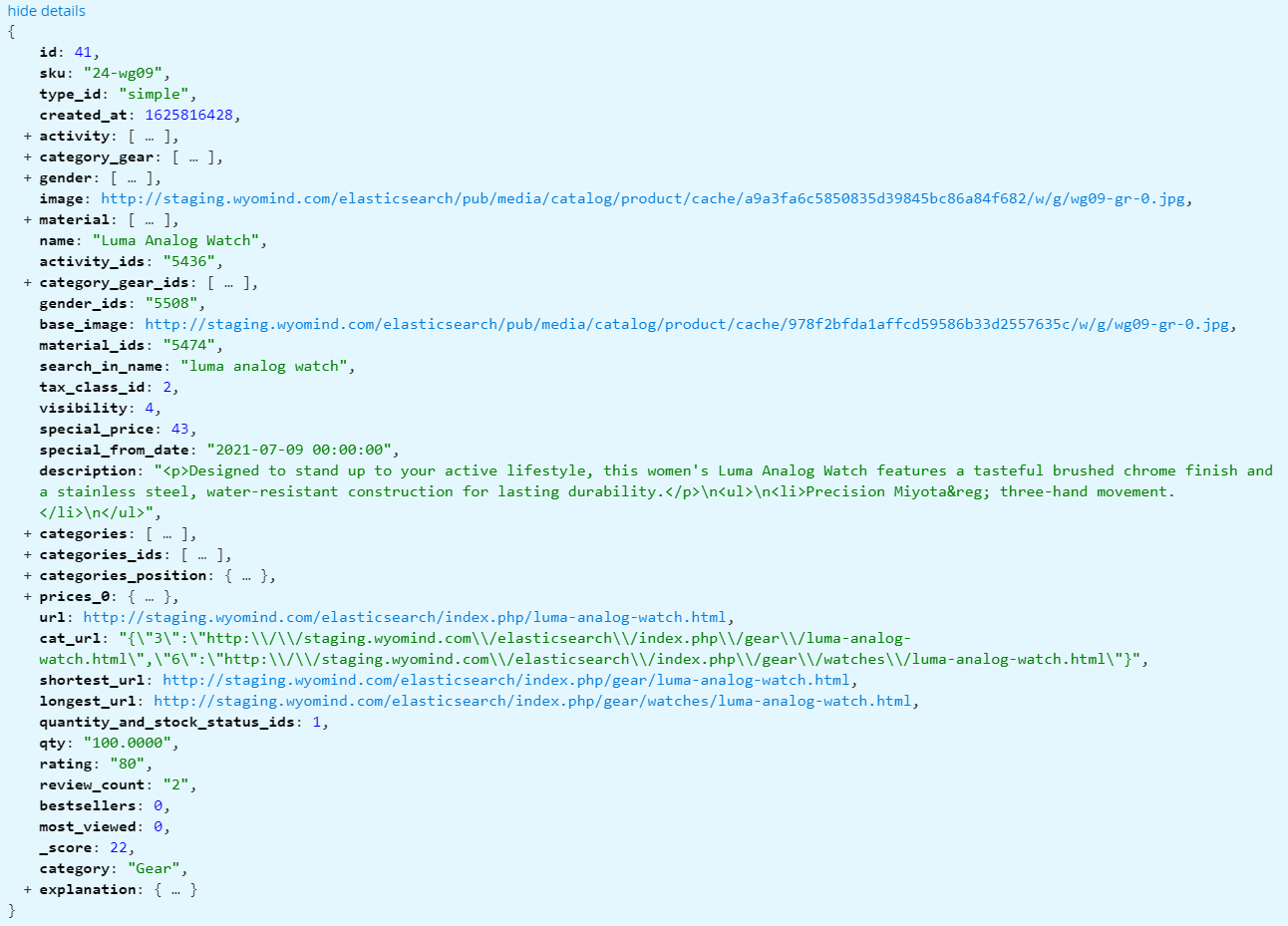

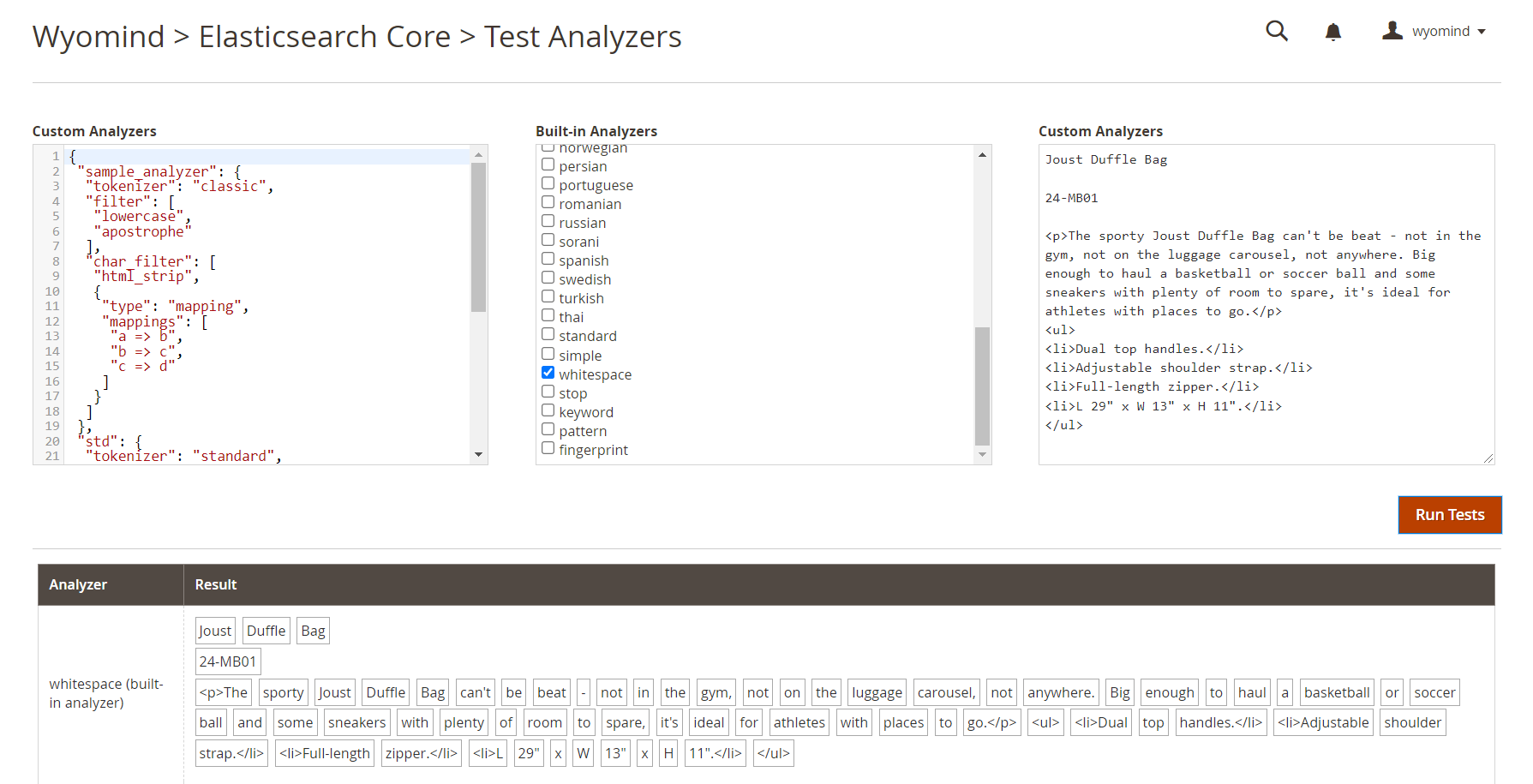


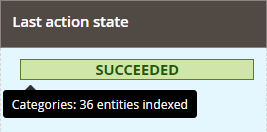
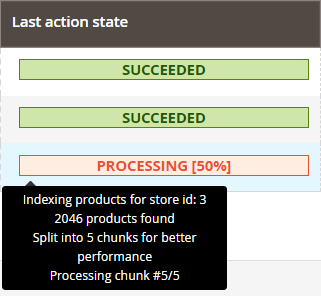


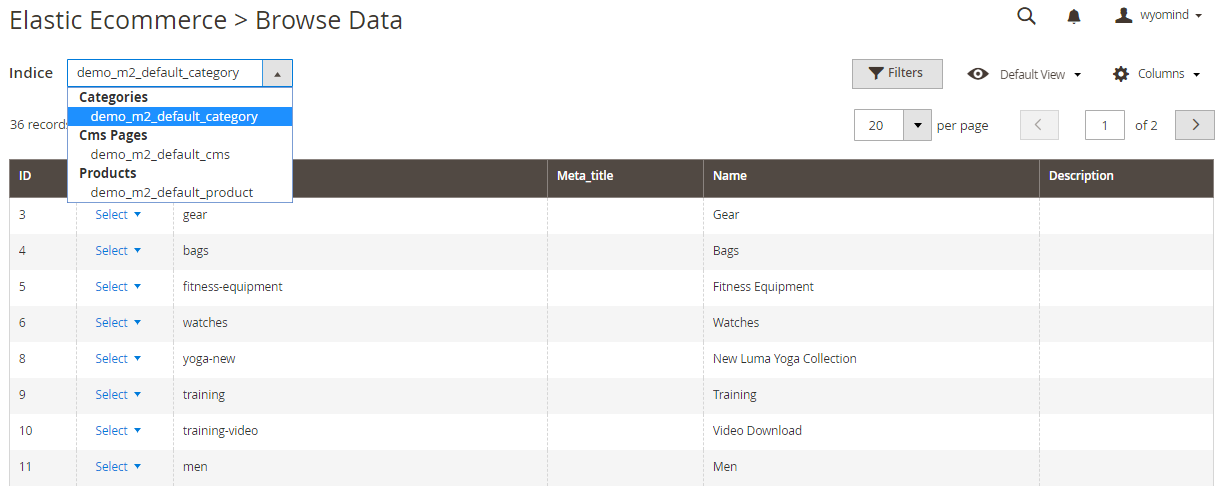

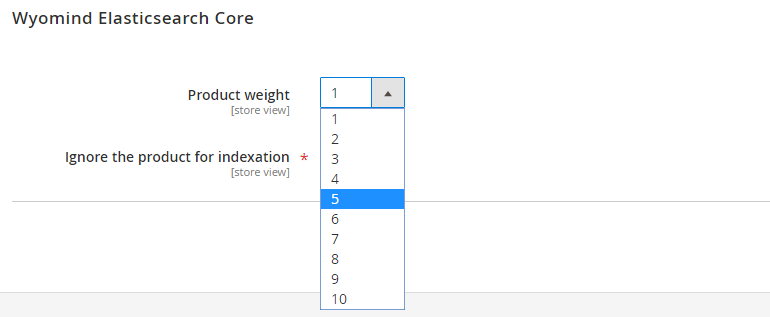

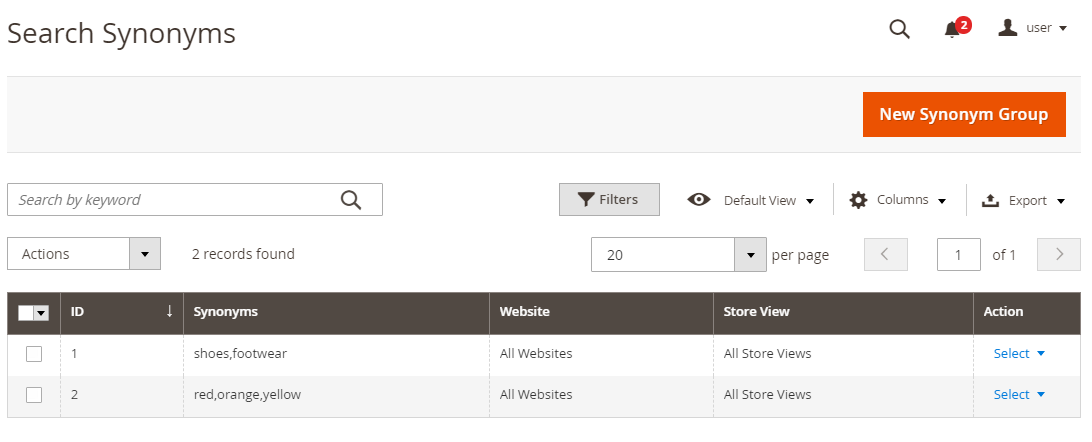


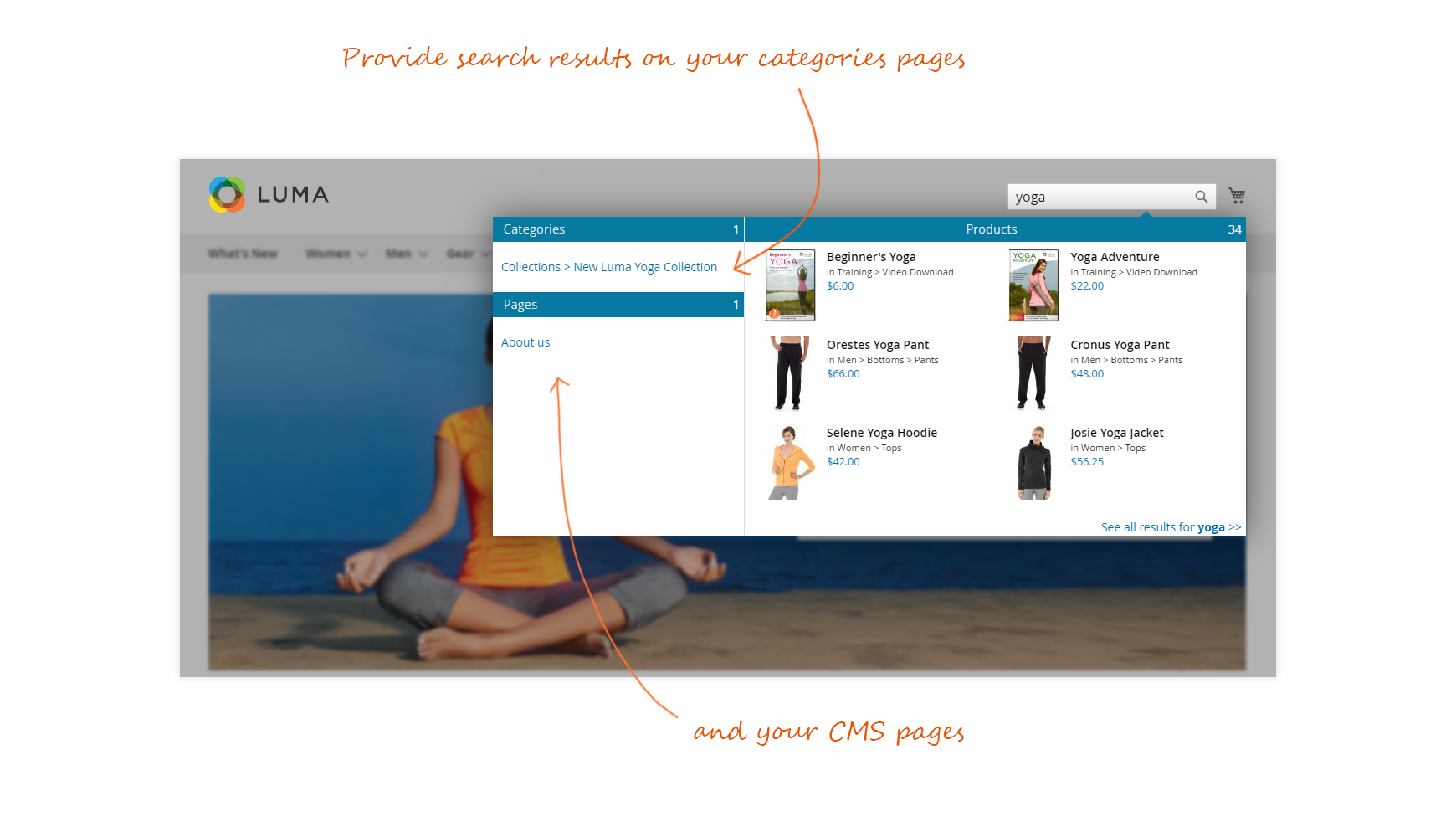
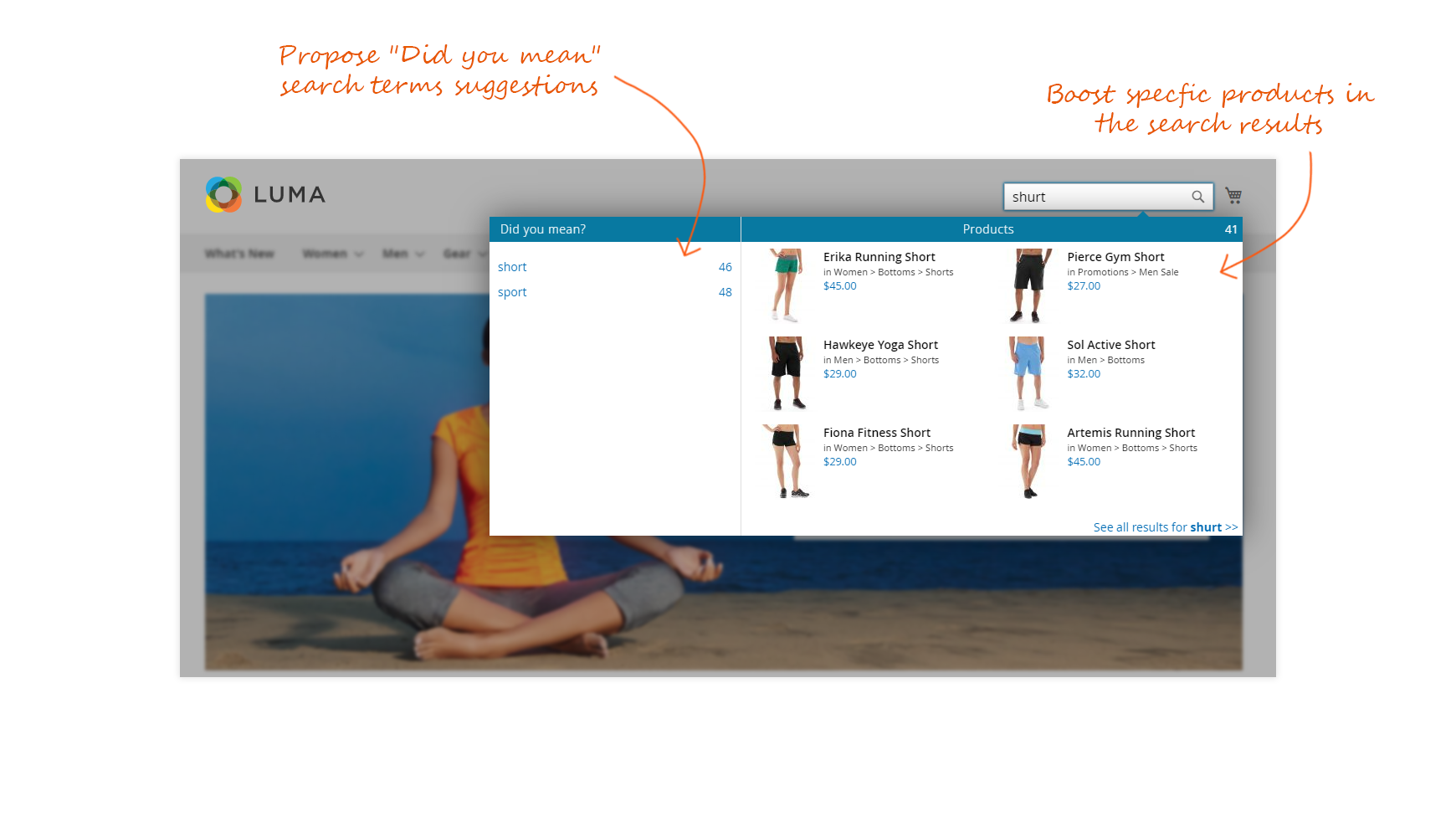






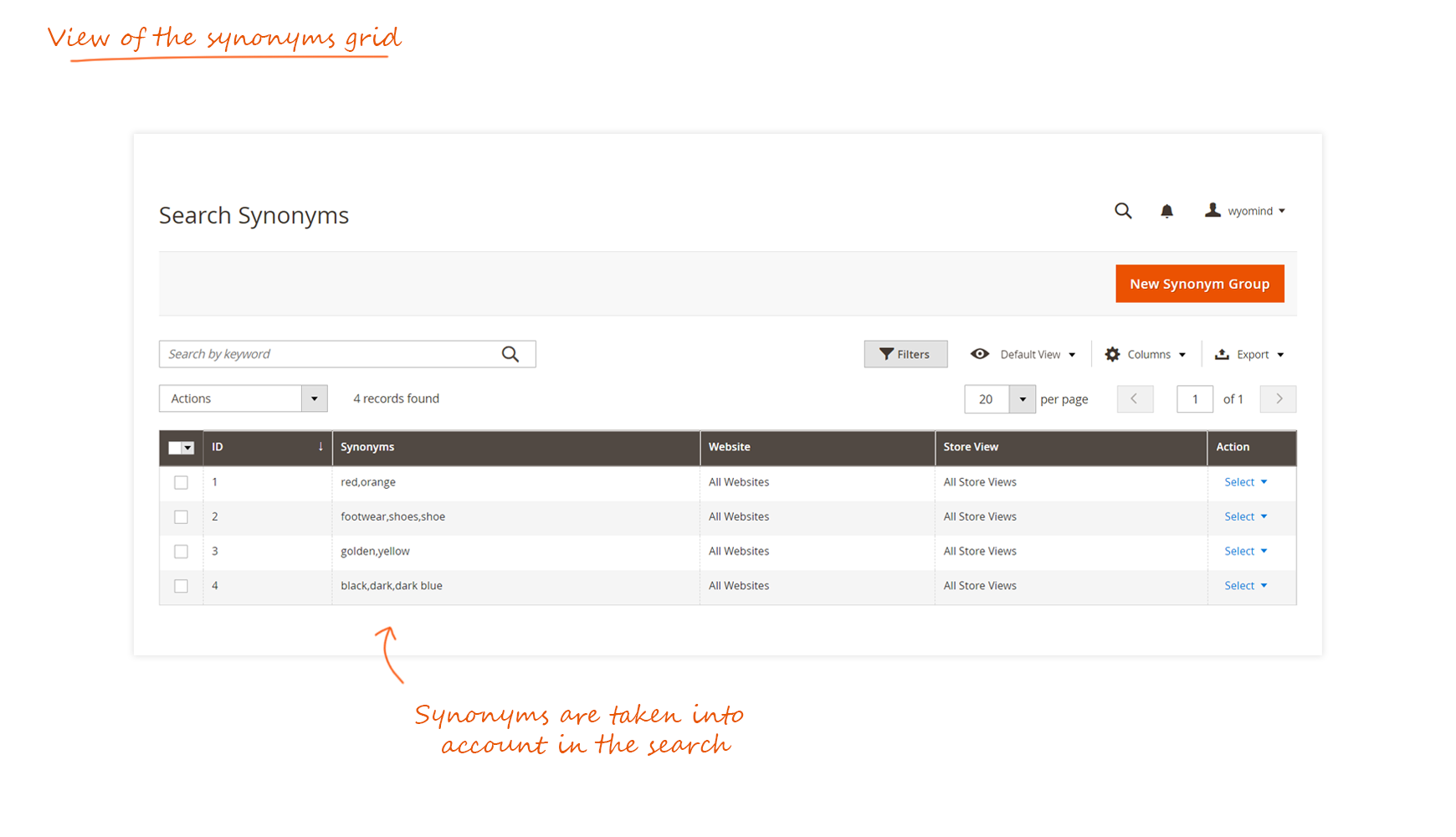

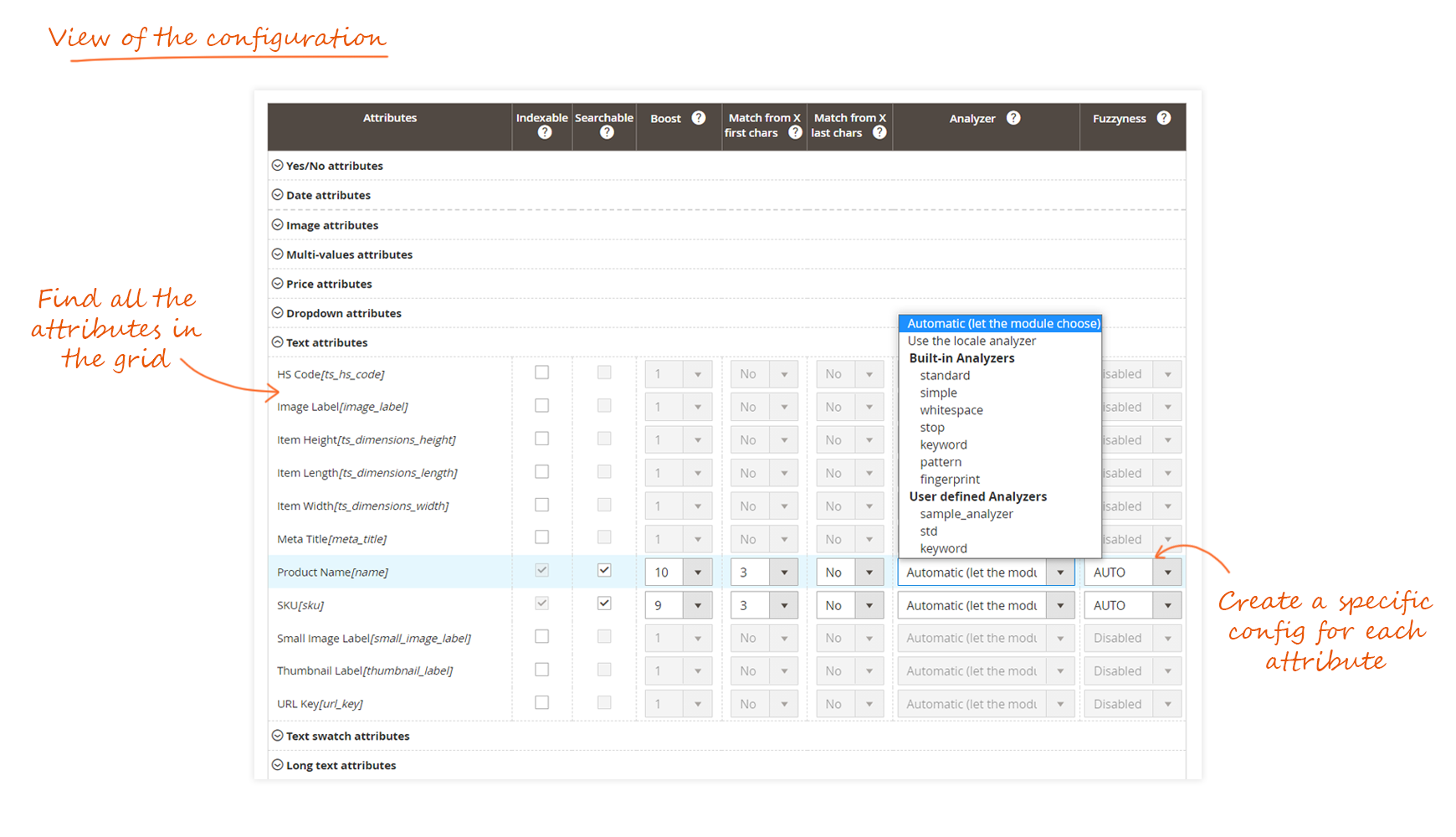







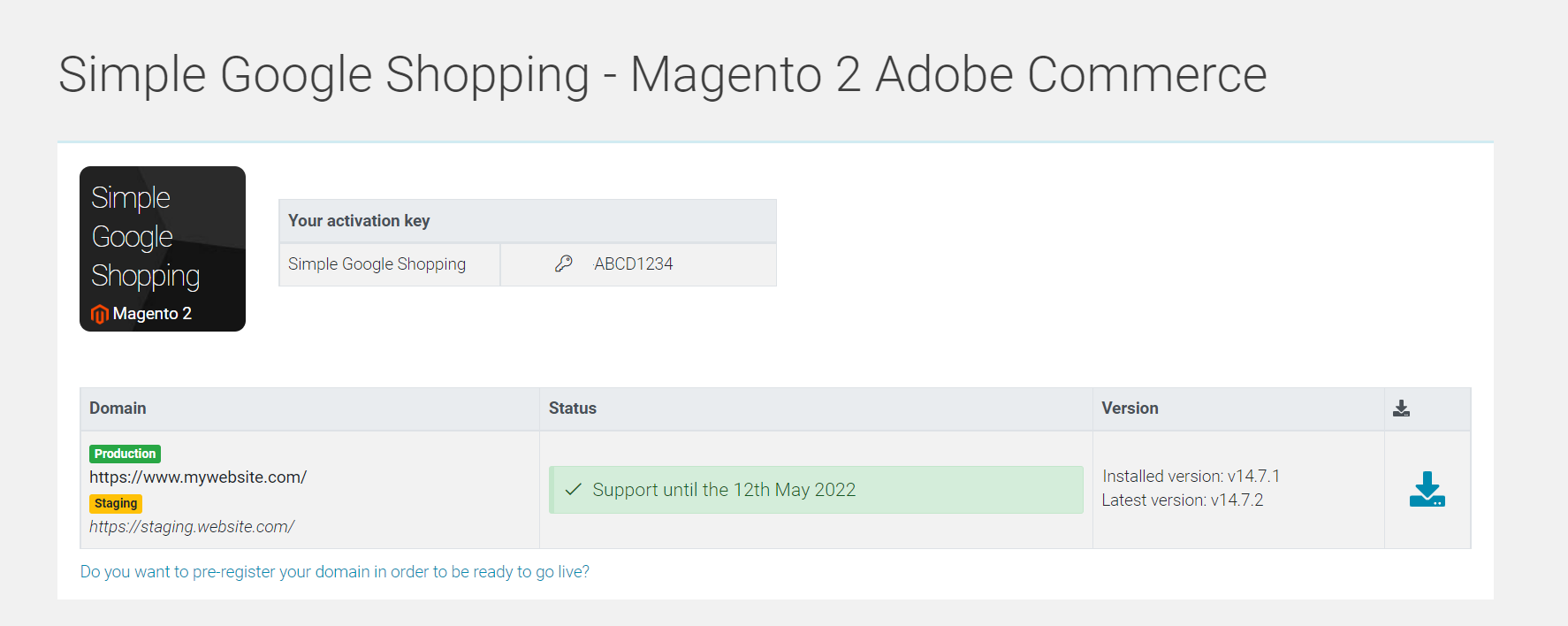
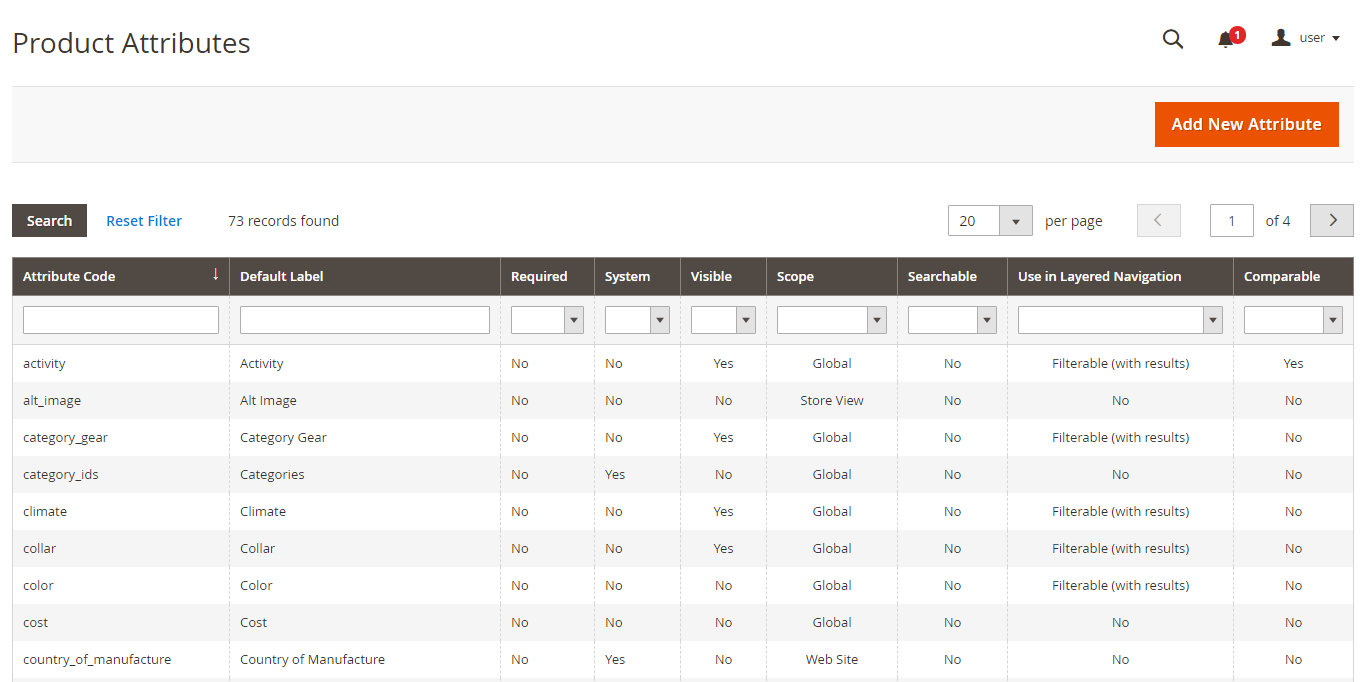

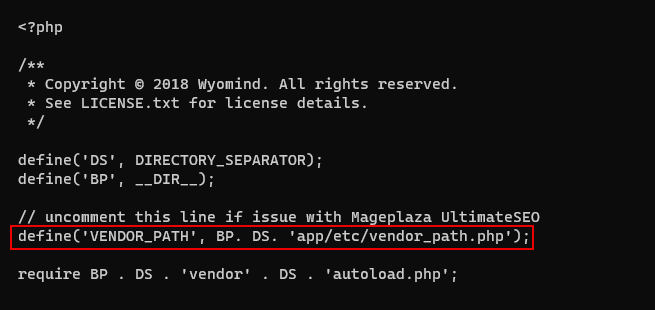
 Very complete! Easy to configure and with many specificity options. A plus for my website!
Very complete! Easy to configure and with many specificity options. A plus for my website! We have been using this extension for years with great results. Our customers are satisfied with the user experience, and the IT department considers it one of the most complete extensions for Magento 1, now migrated to OpenMage. Undoubtedly, a great purchase.
We have been using this extension for years with great results. Our customers are satisfied with the user experience, and the IT department considers it one of the most complete extensions for Magento 1, now migrated to OpenMage. Undoubtedly, a great purchase. The support we have received from Wyomind since installing this plug in, has been second to none. The team are very responsive & quick to come back to me with any feedback. We have seen huge appreciation & use by our customers on the site.
The support we have received from Wyomind since installing this plug in, has been second to none. The team are very responsive & quick to come back to me with any feedback. We have seen huge appreciation & use by our customers on the site. We have been using Enhanced Autocomplete for several years now. We are really happy with it. Is works very fast in frontend and is easy for our customers to use. There are plenty of opportunities to promote the products you want for a given searchterm. So could recommend this to all magento 2 shops.
We have been using Enhanced Autocomplete for several years now. We are really happy with it. Is works very fast in frontend and is easy for our customers to use. There are plenty of opportunities to promote the products you want for a given searchterm. So could recommend this to all magento 2 shops. We use this plugin with several projects in Magento 2 and Magento 1. The website visitor gets a very fast and well structured autocomplete result overview. The search works on products, categories and CMS pages and it has still a very fast indexation, even with several thousands products. Apart from that you can define a configuration specific to each store view. We also appreciate the very fast and professional customer support.
We use this plugin with several projects in Magento 2 and Magento 1. The website visitor gets a very fast and well structured autocomplete result overview. The search works on products, categories and CMS pages and it has still a very fast indexation, even with several thousands products. Apart from that you can define a configuration specific to each store view. We also appreciate the very fast and professional customer support.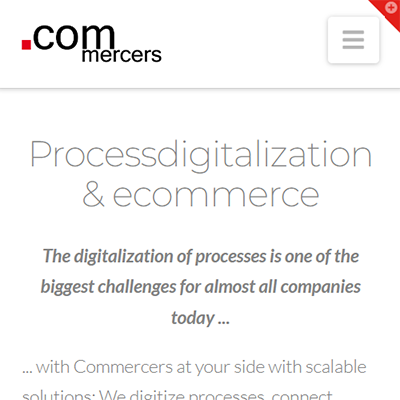 Easy to use and search speed is so fast
Easy to use and search speed is so fast Very easy to use. This plugin has improve our conversion rate by 4%. The code is clean and the support is great. I would strongly recommend this plugin
Very easy to use. This plugin has improve our conversion rate by 4%. The code is clean and the support is great. I would strongly recommend this plugin i used magento 1 and also magento 2. Both versions make me feel very satisfied
i used magento 1 and also magento 2. Both versions make me feel very satisfied Great product - this help us to improve our conversion rate by 4%. I would strongly recommend this product for any magento 2 store. The documentation was very helpful and the code is clean. This has made our search box more intelligent which ultimates help the customers while shopping on our store. Enhanced Autocomplete plugin magento 2
Great product - this help us to improve our conversion rate by 4%. I would strongly recommend this product for any magento 2 store. The documentation was very helpful and the code is clean. This has made our search box more intelligent which ultimates help the customers while shopping on our store. Enhanced Autocomplete plugin magento 2 The support is quick and efficient. Due to the optimization of the search settings, we were able to improve the search ergonomics of the website. The team is also helpful with the subsequent optimization of the search settings.
The support is quick and efficient. Due to the optimization of the search settings, we were able to improve the search ergonomics of the website. The team is also helpful with the subsequent optimization of the search settings. This module has made our search life so much simpler. Great module to work with. Tks
This module has made our search life so much simpler. Great module to work with. Tks We have used modules for Magento 1 and Magento 2. The first one was much much better and make search even now better as Magento 2 with new Elastic. Our wishes: decrease time to saving categories and more settings for elastic
We have used modules for Magento 1 and Magento 2. The first one was much much better and make search even now better as Magento 2 with new Elastic. Our wishes: decrease time to saving categories and more settings for elastic This is a must have search for your online M2 store. Very fast and functional search. I highly recomend this extension..
This is a must have search for your online M2 store. Very fast and functional search. I highly recomend this extension..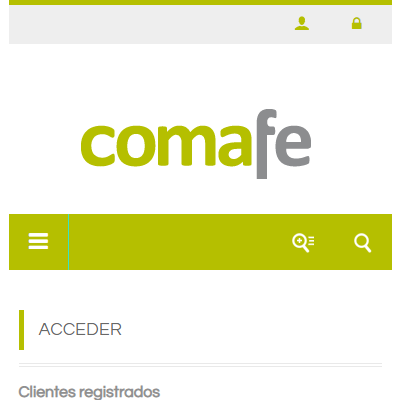 The module works perfectly, is better and cheaper than other searchers. I use several times the support and always resolve the problems. The searches have been optimized long after the installation of the module. Customers have told us that it works much better than before that we did not have this module.
The module works perfectly, is better and cheaper than other searchers. I use several times the support and always resolve the problems. The searches have been optimized long after the installation of the module. Customers have told us that it works much better than before that we did not have this module.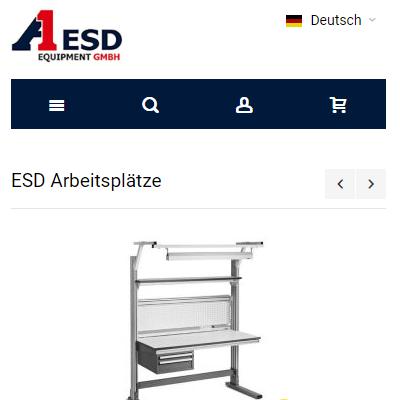 We have used modules for Magento 1 and Magento 2. The first one was much much better and make search even now better as Magento 2 with new Elastic. Our wishes: decrease time to saving categories and more settings for elastic
We have used modules for Magento 1 and Magento 2. The first one was much much better and make search even now better as Magento 2 with new Elastic. Our wishes: decrease time to saving categories and more settings for elastic perfect Experience with perfect team support
perfect Experience with perfect team support It's a very nice and working extension for Magento 1.
It's a very nice and working extension for Magento 1. This module has made our search life so much simpler. Great module to work with.
This module has made our search life so much simpler. Great module to work with. Simple to configure and easy to tweak to get the best search results for customers.
Simple to configure and easy to tweak to get the best search results for customers. I used the module both for magento1 and magento2. For the magento1 version i think it was the best module. We did not have any issues or confilcts (only some minor conflicts with theme overrides). It worked ok with amasty layered navigation and in general it was perfect. On magento2 things were not that pretty. We had problems both with elastic search engine compatibility but the most important problem we had is that it is not compatible with amasty seo layered navigation for M2.
I used the module both for magento1 and magento2. For the magento1 version i think it was the best module. We did not have any issues or confilcts (only some minor conflicts with theme overrides). It worked ok with amasty layered navigation and in general it was perfect. On magento2 things were not that pretty. We had problems both with elastic search engine compatibility but the most important problem we had is that it is not compatible with amasty seo layered navigation for M2. We have recently purchased this product due to it's flexibility giving us a powerful search tool than we had on our magento 1 website. We have been impressed with the customisation the extension offers and look forward to fine tuning it to our needs. I'm sure we will recommend this extension to our partners.
We have recently purchased this product due to it's flexibility giving us a powerful search tool than we had on our magento 1 website. We have been impressed with the customisation the extension offers and look forward to fine tuning it to our needs. I'm sure we will recommend this extension to our partners. Extension works great, thanks! Full configurable and stable.
Extension works great, thanks! Full configurable and stable. module elastic is top
module elastic is top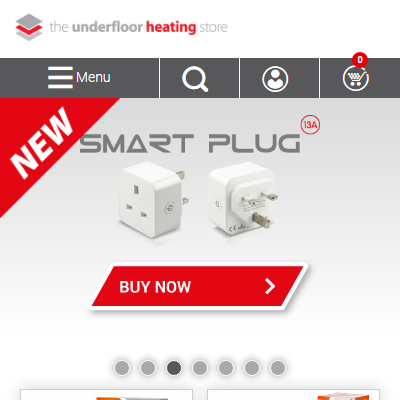 The Elasticsearch Autocomplete module is great. It works seamlessly with Elastic Search and offers a really great addition to my website. Without a doubt this has contributed to a better UX and increased sales. I love the way it shows results from both products and pages and having the ability to gives specific products 'weight' in the search makes it super customisable. I would definitely recommend this to anyone.
The Elasticsearch Autocomplete module is great. It works seamlessly with Elastic Search and offers a really great addition to my website. Without a doubt this has contributed to a better UX and increased sales. I love the way it shows results from both products and pages and having the ability to gives specific products 'weight' in the search makes it super customisable. I would definitely recommend this to anyone. We have been using it on our Magento 2 shop for last 2 years and its been improved a lot. Its improve the overall site speed of our page by dynamically loading the category since we have about 300 categories. Also its easy to set up and configurable! Thanks a lot!
We have been using it on our Magento 2 shop for last 2 years and its been improved a lot. Its improve the overall site speed of our page by dynamically loading the category since we have about 300 categories. Also its easy to set up and configurable! Thanks a lot! Thanks for the extension.
Thanks for the extension. Easy to configure plug in with good features. Customers enjoy using this search feature and also gives access to our helpful content pages in one place. Our search speed has also improved massively which is great. The layout is tidy and simple to use.
Easy to configure plug in with good features. Customers enjoy using this search feature and also gives access to our helpful content pages in one place. Our search speed has also improved massively which is great. The layout is tidy and simple to use. Really useful.I have done customization for module and with the help of extension provider I was able to resolve issue. Perform better than standard search and so it is a must-have extension. Elasticsearch® Autocomplete is an absolute must have for any store with an extensive product range. We have over 10,000 skus and the search results are fast and relevant. The installation was easy with no conflicts. The settings are easy to understand and configure.
Really useful.I have done customization for module and with the help of extension provider I was able to resolve issue. Perform better than standard search and so it is a must-have extension. Elasticsearch® Autocomplete is an absolute must have for any store with an extensive product range. We have over 10,000 skus and the search results are fast and relevant. The installation was easy with no conflicts. The settings are easy to understand and configure. search autocomplete is very fast, our customers can find the product easily form search. Installation is very easy and can fully maintain from admin. support multi-stores with different languages. support team is very fast to reply and guide. Highly recommended!
search autocomplete is very fast, our customers can find the product easily form search. Installation is very easy and can fully maintain from admin. support multi-stores with different languages. support team is very fast to reply and guide. Highly recommended! Installation is simple, the extension is really stable. We use it with "Cloud Elasticsearch" and it works really well. Perfom better than standard search and so it is a must-have extension. About "customizations" i can say that is really simple to personalize the "frontend" (the autocomplete lists).
Installation is simple, the extension is really stable. We use it with "Cloud Elasticsearch" and it works really well. Perfom better than standard search and so it is a must-have extension. About "customizations" i can say that is really simple to personalize the "frontend" (the autocomplete lists). Must have extension, improves the search,the autocomplete and the performance. Really useful.I have done customization for module and with the help of extension provider I was able to resolve issue.The support of team is very responsive and helpful.
Must have extension, improves the search,the autocomplete and the performance. Really useful.I have done customization for module and with the help of extension provider I was able to resolve issue.The support of team is very responsive and helpful. Elasticsearch® Autocomplete is an absolute must have for any store with an extensive product range. We have over 10,000 skus and the search results are fast and relevant. The installation was easy with no conflicts. The settings are easy to understand and configure. And the support team are very quick to answer and questions you may have.
Elasticsearch® Autocomplete is an absolute must have for any store with an extensive product range. We have over 10,000 skus and the search results are fast and relevant. The installation was easy with no conflicts. The settings are easy to understand and configure. And the support team are very quick to answer and questions you may have. We have been using Elasticsearch Autocomplete for some time now on our website and we find it responsive and generates good auto complete suggestions. The extension was easy to install, reliable and has caused no conflicts. We have found Wyomind's support to be quick and very helpful on this and other extensions we have purchased.
We have been using Elasticsearch Autocomplete for some time now on our website and we find it responsive and generates good auto complete suggestions. The extension was easy to install, reliable and has caused no conflicts. We have found Wyomind's support to be quick and very helpful on this and other extensions we have purchased. this extension works great, and is great for sales!
this extension works great, and is great for sales! We use the Bubble Elastic Search and Bubblelayer in many of our shops. Works like a charm, basic and reliable.
We use the Bubble Elastic Search and Bubblelayer in many of our shops. Works like a charm, basic and reliable. This extension does wonders in improving the functionality of searching on Magento 2 websites. We have over 2,000 products with complex search terms and ElasticSearch does a great job at picking all these up. Makes it so much easier for our customers to find products.
This extension does wonders in improving the functionality of searching on Magento 2 websites. We have over 2,000 products with complex search terms and ElasticSearch does a great job at picking all these up. Makes it so much easier for our customers to find products. Standard Magento search engine isn't good. extension from wyomind boost my magento store to next level. Search results right now are very exact. This is for sure best extension for search for magento stores.
Standard Magento search engine isn't good. extension from wyomind boost my magento store to next level. Search results right now are very exact. This is for sure best extension for search for magento stores.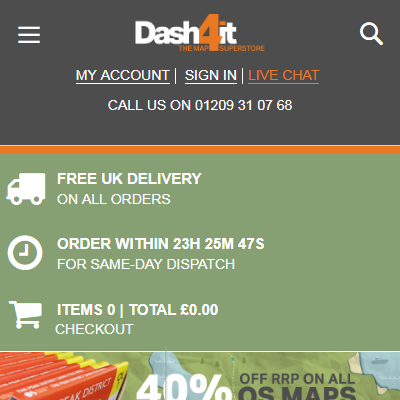 I bought this extension on strong recommendation. Once installed (which was a fairly straight forward process) the elastic search worked without a glitch. This extension is easy to use but with the benefit of it being highly flexible with many of the options being tailorable to your specific needs. Highly Recommended!
I bought this extension on strong recommendation. Once installed (which was a fairly straight forward process) the elastic search worked without a glitch. This extension is easy to use but with the benefit of it being highly flexible with many of the options being tailorable to your specific needs. Highly Recommended! The basic Magento search gives poor results, with that extension, we got good results, the support team is pretty good. It's easy to customize the frontend to have a great mini-search. The search result page is less useful that preview now.
The basic Magento search gives poor results, with that extension, we got good results, the support team is pretty good. It's easy to customize the frontend to have a great mini-search. The search result page is less useful that preview now. We've found the Elasticsearch Autocomplete search extension for Magento to be an effective, feature rich search solution for our website which is great value for money. Setup was easy and we have found that our conversion rate and customer satisfaction has improved
We've found the Elasticsearch Autocomplete search extension for Magento to be an effective, feature rich search solution for our website which is great value for money. Setup was easy and we have found that our conversion rate and customer satisfaction has improved It's one of the best extensions out there. Works right away out of the box. Easy to configure, accurate and it's fast! We didn't have any problems with our large catalogue of products. At the end of the day you want to deliver the best experience to your customers and Elasticsearch delivers.
It's one of the best extensions out there. Works right away out of the box. Easy to configure, accurate and it's fast! We didn't have any problems with our large catalogue of products. At the end of the day you want to deliver the best experience to your customers and Elasticsearch delivers.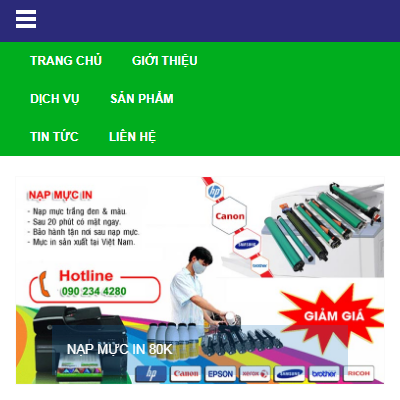 works very well
works very well We choose Elasticsearch extension for your our Magento2 Store and its working perfect as well as I take much support from them and getting best and fast solution and response from them. Developers are always ready to help in case of any problems so I will definitely recommend this extension for your store.
We choose Elasticsearch extension for your our Magento2 Store and its working perfect as well as I take much support from them and getting best and fast solution and response from them. Developers are always ready to help in case of any problems so I will definitely recommend this extension for your store. extension works great, thanks! Setup is little bit complicated for us but extension is works very well. If you not happy with default search action on magento like us, you need this one!
extension works great, thanks! Setup is little bit complicated for us but extension is works very well. If you not happy with default search action on magento like us, you need this one! This extension is working great ! The support answer very fast with right answer. I recommand it !
This extension is working great ! The support answer very fast with right answer. I recommand it ! Installing the extension was so easy and fast that we can only recommend it to anyone interested in a better search form than the one included in Magento. All functionalities work out of the box and is easy to integrate with Porto theme.
Installing the extension was so easy and fast that we can only recommend it to anyone interested in a better search form than the one included in Magento. All functionalities work out of the box and is easy to integrate with Porto theme. This module is easy to install and configure and it deliver fast search results. Developers are always ready to help in case of some problems
This module is easy to install and configure and it deliver fast search results. Developers are always ready to help in case of some problems